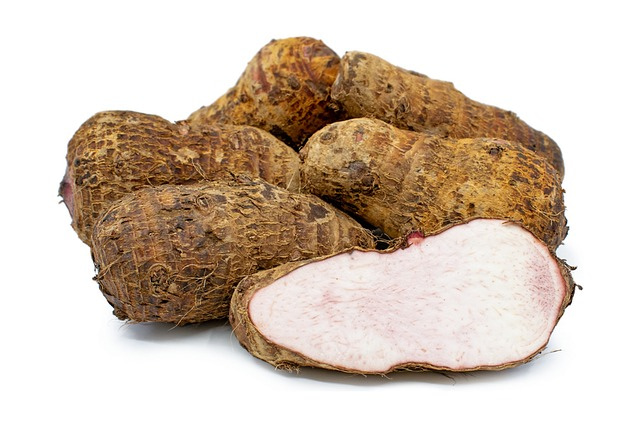Welcome to another tantalizing recipe adventure on our culinary journey! Today, we’re diving into the heart of South Indian cuisine with a mouthwatering quick Crispy Colocasia fry recipe (Chembu Varuval). This delectable recipe promises a symphony of flavors, combining the earthy essence of taro roots with the irresistible crunch of perfectly fried goodness. Whether you’re a seasoned chef or a kitchen novice, this easy recipe is sure to impress your taste buds and leave you craving for more.
Originating from the culinary treasure trove of South India, Colocasia fry holds a special place in the hearts of food enthusiasts. Also known as Taro Root Fry, this dish is deeply rooted in the rich cultural heritage of the region, where traditional recipes are cherished and passed down through generations. With its simple yet flavorful preparation, Colocasia fry embodies the essence of South Indian comfort food, making it a beloved favorite in households across the region.
Find more side-dish recipes
All about Colocasia (Taro Root)

Colocasia or Taro root, also known as Colocasia esculenta, is a starchy tuber that has been a staple food in many cultures for centuries. Belonging to the Araceae family, this root vegetable boasts a unique flavor and a host of culinary uses.
Native to Southeast Asia and India, taro root has a brown outer skin and a creamy white flesh when peeled. It is often compared to potatoes in terms of texture and can be prepared in various ways, including boiling, frying, steaming, and baking.
One of the most popular dishes made with taro root is Colocasia (Chembu) Varuval, a South Indian delicacy known for its crispy exterior and tender interior. In addition to its culinary uses, taro root is also valued for its nutritional benefits.
Rich in dietary fiber, vitamins, and minerals, taro root offers a range of health benefits, including improved digestion, enhanced immunity, and better heart health. It is also low in calories and fat, making it a nutritious addition to any diet.
Whether enjoyed as a savory snack or incorporated into hearty main dishes, taro root continues to captivate taste buds around the world with its versatility and delightful flavor profile.
Ingredients Breakdown
- Colocasia (Chembu) Roots: 500g – The star ingredient of our dish, colocasia (chembu) roots lend a unique earthy flavor and delightful crunch to the dish.
- Salt: 1-2 teaspoons – Essential for seasoning and enhancing the flavors of the colocasia (chembu) roots during the frying process.
- Oil: For frying – Use your preferred cooking oil for frying, ensuring it’s heated to the right temperature for crispy perfection.
Step-by-Step Instructions
Now, let’s embark on our culinary adventure with step-by-step instructions to create the perfect Crispy Colocasia Fry (Chembu Varuval):
- Prepare the Colocasia (Chembu) Roots: Peel the colocasia (chembu) roots and wash them thoroughly. Cut them into small pieces, ensuring uniform size for even frying.
- Heat the Oil: In a frying pan or kadai, heat oil on medium heat until it reaches the desired frying temperature.
- Fry the Colocasia (Chembu) Roots: Carefully add the chopped colocasia (chembu) roots into the hot oil, ensuring they are spread out evenly to prevent overcrowding.
- Season with Salt: Sprinkle 1-2 teaspoons of salt over the frying colocasia (chembu) roots, adjusting according to taste preferences.
- Fry Until Golden Brown: Fry the colocasia (chembu) roots until they turn golden brown and crispy, stirring occasionally for even cooking.
- Drain and Serve: Once the colocasia (chembu) roots are crisp and golden, remove them from the oil using a slotted spoon and drain excess oil on a paper towel-lined plate.
- Enjoy: Serve the Crispy Colocasia Fry (Chembu Varuval) hot as a delightful snack or as a flavorful side dish with your favorite main course.
Frequently Asked Questions
- Can I use other types of oil for frying?
- – Yes, you can use any cooking oil of your choice, such as vegetable oil, canola oil, or sunflower oil.
- Are there any substitutes for colocasia (chembu) roots?
- – While colocasia (chembu) roots are traditionally used in this recipe, you can experiment with other root vegetables like potatoes or sweet potatoes for a different twist.
- How do I store leftover Colocasia (Chembu) Varuval?
- – Store any leftovers in an airtight container in the refrigerator for up to 2-3 days. Reheat in the oven or toaster oven for best results.
Nutrition Facts
Let’s take a closer look at the nutritional benefits of our Crispy Colocasia Fry (Chembu Varuval) :
– Colocasia (Chembu) Roots: Rich in dietary fiber, vitamins, and minerals, colocasia (chembu) roots offer a host of health benefits, including improved digestion, enhanced immunity, and better heart health.
– Salt: While salt is essential for seasoning, it’s important to use it in moderation to maintain a balanced diet. Excessive salt intake can lead to high blood pressure and other health issues.
– Oil: While frying adds flavor and texture to the dish, it’s important to use oil in moderation to avoid excess calories and unhealthy fats. Opt for healthier cooking methods like baking or air frying for a lighter alternative.
A Culinary Adventure Awaits
As we conclude our culinary journey through the vibrant flavors of South India, I invite you to embark on your own culinary adventure with our Crispy Colocasia Fry (Chembu Varuval) recipe. Whether you’re craving a quick and easy snack or looking to impress your friends and family with a flavorful side dish, this recipe is sure to delight your taste buds and transport you to the sunny shores of South India.
I hope you enjoyed this flavorful recipe and found inspiration in the rich culinary heritage of South India. Don’t forget to share your feedback and culinary creations with us – we’d love to hear from you! Thank you for joining us on this culinary adventure, and be sure to explore our blog for more delicious recipes, cooking tips, and culinary tales. Until next time, happy cooking!

